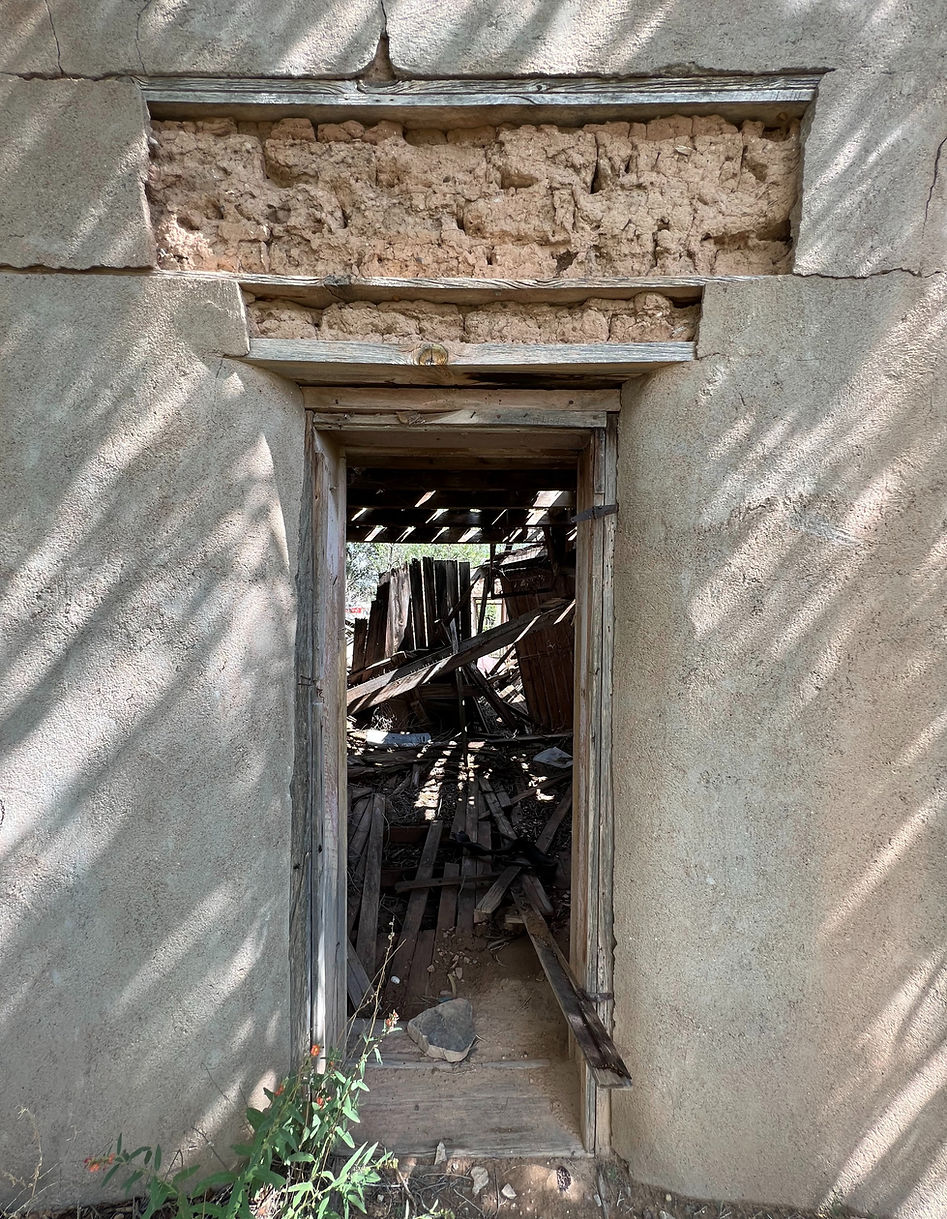
ENCINO
County: Torrance
Year Established: 1904
Year Abandoned: Semi-ghost town
Population: 54 (As of 2024)
Location: Situated along U.S. Highway 285 between Clines Corners and Vaughn, with nearby cities including Albuquerque (72.4 miles away) and Vaughn. It’s also accessible via the Atchison, Topeka, and Santa Fe Railroad route between Vaughn and Belen.
About: The name “Encino,” meaning “oak” in Spanish, reflects the scrubby oak trees once prevalent on the central plains of New Mexico. The area features a serene, rural landscape with views of the Sangre de Cristo Mountains in nearby regions.
Encino is often described as a modern-day ghost town due to its declining population and lack of businesses. However, residents and visitors note its historical charm and quiet atmosphere.
Encino was homesteaded by Bonnie Salas around 1900, with the post office established in 1904. In 1905, the Atchison, Topeka, and Santa Fe Railway announced plans for a depot, spurring growth. The Bond family purchased 40 acres from Salas, selling part to the railroad for the depot. The depot closed in 1965, contributing to the village’s decline.
Richard Charles (R.C.) Dillon, New Mexico’s eighth governor (1927–1931), was Encino’s most prominent figure. Born in St. Louis, Dillon moved to Encino in 1907, ran R.C. Dillon & Company (a general store), and owned a sheep ranch. As governor, he focused on infrastructure, particularly road paving, crucial for the region’s unpaved routes.
The closure of the railroad depot and the high school in 1982 marked significant blows. Today, many adobe buildings are deteriorating, and the population has steadily declined.
As of July 1, 2024, Encino had an estimated population of 54, down from 82 in 2010 and 94 in 2000, reflecting a declining trend. It ranks as the 447th most populated city in New Mexico out of 492.
Limited economic activity exists today. The Encino Firehouse Mercantile & Deli recently opened, offering some local commerce. No major businesses operate, and residents often rely on nearby Vaughn for services like gas stations or dining. The old Works Progress Administration-built gymnasium features southwestern-themed murals by Hallie Williams, painted between 1939 and 1942 for $20 each. The gym, now housing city offices, is considered picturesque and a potential film industry location.
Remains: Tons to see! Worth the trip!
Timeline

Encino, New Mexico. Passing through the town on the Atchison, Topeka and Santa Fe Railroad between Vaughn and Belen, New Mexico. Photo taken in March 1943.
Contributor Name
Delano, Jack, 1914-1997, photographer
Source: Library of Congress
R.C. Dillon & Company Building

Aug 2022

Aug 2022

Aug 2022
In 1907, Richard Charles Dillon moved to Encino, New Mexico. Dillon started R.C. Dillon and Company, a general wholesale and retail business in Encino. He also developed an interest in ranching and livestock trade and purchased a sheep ranch at Encino. Dillon maintained a business stake in both R.C. Dillon and Co. and the Frank Bond and Son Co., throughout his life.
Dillon was first elected to public office in 1924 as Republican state senator from Torrance County. He was elected Governor in 1926, and, upon re-election in 1928, became the first two term Governor in the history of the State of New Mexico. His administration was characterized by business-like management and the development of New Mexico's infrastructure, particularly through the construction and black-topping of roads.
Cafe

Aug 2022
Abandoned Homes & Outhouses

Aug 2022

Aug 2022

Aug 2022

Aug 2022

Aug 2022

Aug 2022

Aug 2022






Abandoned Shed

Encino Motel

Weathered Windmill

Unknown Structures







